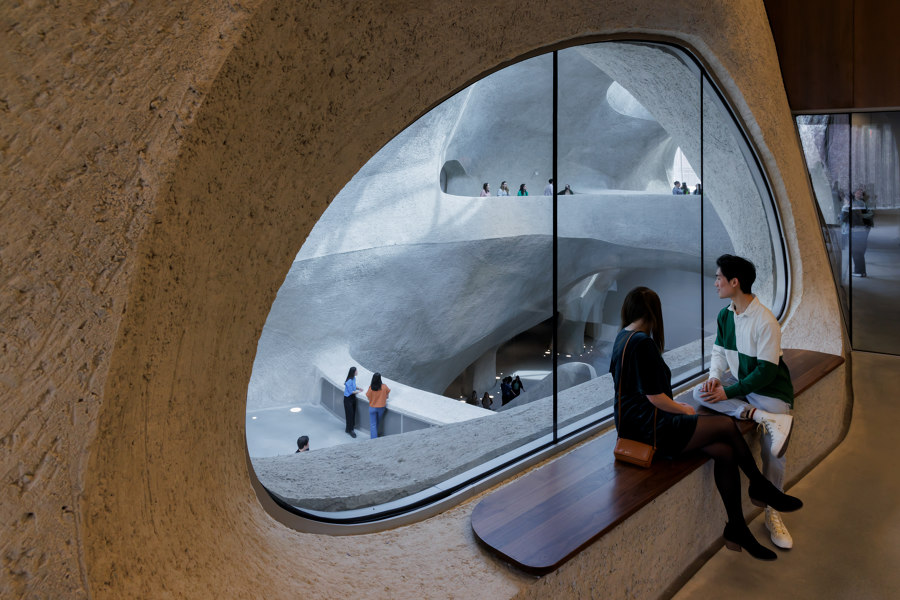The 230,000-square-foot $465 million Gilder Center project was announced in 2014 and includes six floors above ground, four of which are open to the public, and one below. It creates 33 connections among 10 Museum buildings to link the entire campus and establishes a new entrance on the Museum’s west side, at Columbus Avenue and 79th Street, in Theodore Roosevelt Park. Visitors coming from Columbus Avenue experience the Gilder Center as a building set in a park, constructed at the same height as the older Museum buildings that flank it, with flowing, gentle curves. Adjacent areas of the park have been enhanced with a new landscape design, developed by Reed Hilderbrand with community input, which features more pathways and seating areas.
Offering a visual link between the two sides of the campus, the Gilder Center’s undulating façade, with its inviting expanses of bird-safe fritted glass, is clad in Milford pink granite, the same stone used on the Central Park West entrance. The diagonal pattern of the stone panels evokes both the phenomenon of geological layering and the design of the richly textured, coursing surface of the masonry on the Museum’s 77th Street side.
Upon entering the Gilder Center, visitors find themselves in the five-story Kenneth C. Griffin Exploration Atrium, a grand space illuminated with natural light admitted through large-scale skylights. The building’s design is informed by the ways in which wind and water carve out landscapes that are exciting to explore, as well as the forms that hot water etches in blocks of ice.
The texture, color, and flowing forms of the Griffin Atrium were inspired by canyons in the southwestern U.S. and animate the Gilder Center’s grand entrance, evoking awe, excitement, and discovery. Its striking structure has been built by spraying concrete directly onto rebar without traditional formwork in a technique known as “shotcrete,” invented in the early 1900s by Museum naturalist and taxidermy artist Carl Akeley.
The bridges and openings in the hand-finished shotcrete connect visitors physically and visually to multiple levels housing new exhibition galleries, designed by Ralph Appelbaum Associates with the Museum’s Exhibition Department, education spaces, and collections facilities, creating welcoming sightlines that encourage movement into and throughout the building. The verticality of the Griffin Atrium also acts as a key sustainability feature, providing natural light and air circulation to the heart of the building’s interior.
A broad, grand staircase on the east side of the Griffin Atrium, on axis with the entrance, is designed with one side as seating steps, featuring deep, walnut-covered treads and high risers that offer visitors a place to gather for rest and conversation and can be used as seating for programs. With improved circulation provided by the Gilder Center, Museum visitors will be able to proceed from the entrance on Columbus Avenue all the way through to Central Park West, or vice-versa.
Design Team:
Studio Gang





































